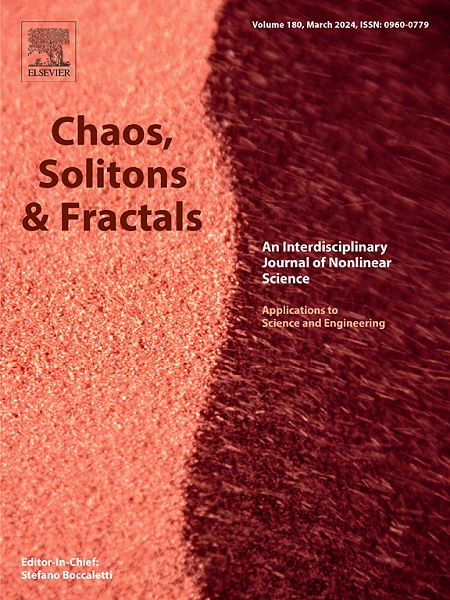戴口罩导致大城市人群呼吸道传染病传播的多重转变
IF 5.6
1区 数学
Q1 MATHEMATICS, INTERDISCIPLINARY APPLICATIONS
引用次数: 0
摘要
在大都市地区,呼吸道传染病的爆发往往伴随着佩戴口罩行为的广泛采用。然而,戴口罩与疾病传播之间的动态反馈机制尚不清楚。在这项研究中,我们首先利用人口普查数据构建了一个年龄结构的大都市人口,并使用年龄特定的接触矩阵描述了其人际联系网络。随后,我们提出了一个耦合传播动力学模型,该模型考虑了戴口罩与疾病传播之间的不对称相互作用,其中戴口罩行为受到局部和全局信息的影响。通过扩展微观马尔可夫链方法,建立了一个理论分析框架,并利用新一代矩阵法计算了基本再现数R0。最后,我们通过数值模拟来探讨口罩佩戴行为与大都市人群呼吸系统疾病传播的共同进化。戴口罩的引入在系统中引起了多重转换。根据疾病对佩戴口罩的反应程度,我们将疾病分为三类:口罩敏感型疾病、口罩抗性疾病和回避型疾病。戴口罩行为随疾病传播概率增加的演变表现为无口罩期、成长期和衰退期三个阶段。佩戴口罩在有效降低稳态感染密度和峰值感染密度的同时,也延长了达到稳态感染密度和峰值感染密度所需的时间。延长口罩佩戴时间可提高平均佩戴率,而加强公众宣传活动可降低平均佩戴率。此外,戴口罩会增加年轻人群和学校环境中的感染风险。本文章由计算机程序翻译,如有差异,请以英文原文为准。
Mask wearing induces multiple transitions of respiratory infectious disease spreading in metropolitan populations
The outbreak of respiratory infectious diseases in metropolitan areas is often accompanied by the widespread adoption of mask wearing behavior. However, the dynamic feedback mechanism between mask wearing and disease spreading remains insufficiently understood. In this study, we first construct an age-structured metropolitan population using census data and describe its interpersonal contact network using age-specific contact matrices. Subsequently, We propose a coupled spreading dynamics model that accounts for the asymmetric interaction between mask wearing and disease spreading, where mask wearing behavior is influenced by both local and global information. A theoretical analysis framework is developed by extending the Microscopic Markov Chain Approach, and the basic reproduction number, , is computed using the next-generation matrix method. Finally, we conduct numerical simulations to explore the coevolution of mask wearing behavior and respiratory disease spreading in metropolitan populations. The introduction of mask wearing induces multiple transitions in the system. Based on the degree of disease responsiveness to mask wearing, we identify three categories of diseases: Mask-sensitive diseases, Mask-resistant diseases, and Mask-evading diseases. The evolution of mask wearing behavior with increasing disease spreading probability exhibits three distinct phases: Non-mask phase, Growth phase, and Decline phase. While mask wearing effectively reduces the steady state infection density and the peak infection density, it simultaneously prolongs the time required to reach these states. Prolonging the duration of mask wearing increases the average mask wearing rate, whereas intensifying public campaigns reduces it. Additionally, mask wearing increases the infection risk among younger populations and within school settings.
求助全文
通过发布文献求助,成功后即可免费获取论文全文。
去求助
来源期刊

Chaos Solitons & Fractals
物理-数学跨学科应用
CiteScore
13.20
自引率
10.30%
发文量
1087
审稿时长
9 months
期刊介绍:
Chaos, Solitons & Fractals strives to establish itself as a premier journal in the interdisciplinary realm of Nonlinear Science, Non-equilibrium, and Complex Phenomena. It welcomes submissions covering a broad spectrum of topics within this field, including dynamics, non-equilibrium processes in physics, chemistry, and geophysics, complex matter and networks, mathematical models, computational biology, applications to quantum and mesoscopic phenomena, fluctuations and random processes, self-organization, and social phenomena.
 求助内容:
求助内容: 应助结果提醒方式:
应助结果提醒方式:


